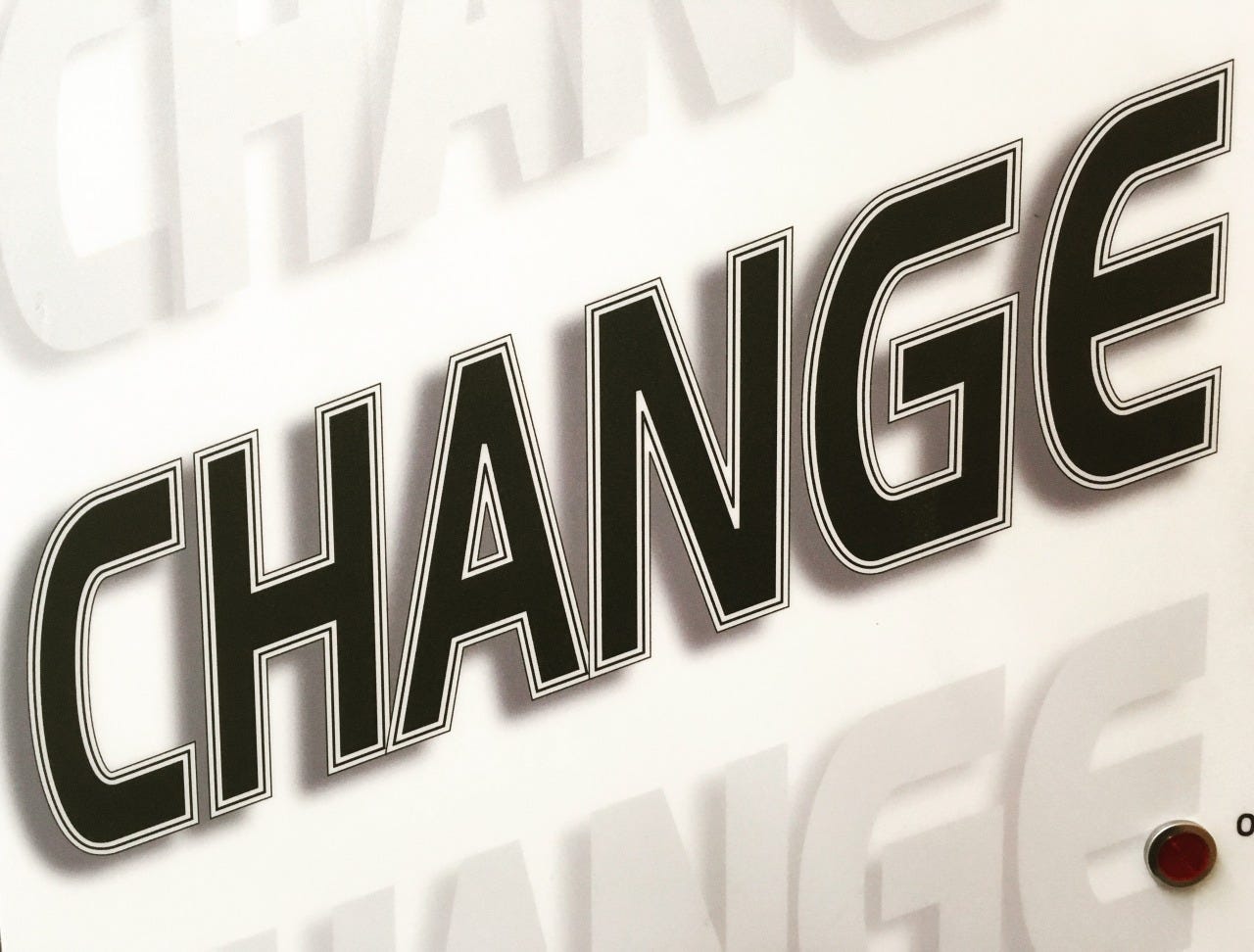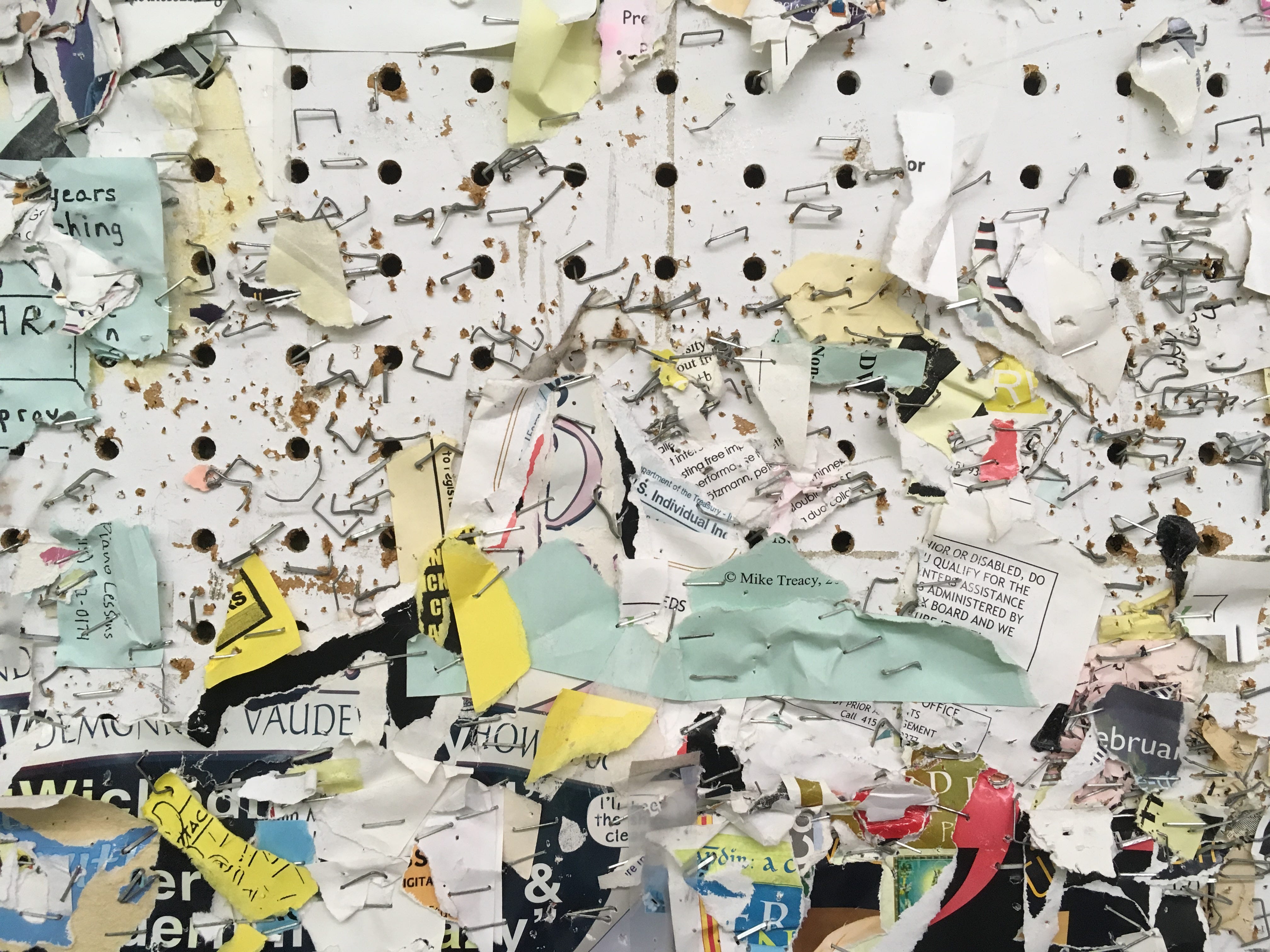Welcome to Laundry World
Washing Machines are Robots That Bored Us
If you’re wondering if the Cybernetic Forests Newsletter has disappeared, it has not. I am in the midst of starting a new consultancy business while moving across (somehow) four states to settle in Rochester, NY. Once all that is settled, I’ll be back to writing. In the meantime, enjoy your summer, and/or enjoy this previously written piece I have dug up from the archives.
Welcome to Laundry World was written in 2015 as an introduction to a zine full of photographs of laundromats I never published. The idea was to create a series of zines documenting spaces that I thought would disappear by 2025. The Laundromat was the focus of the first issue.

I haul cotton, wool, and blends through the street. Socks should have been washed a week ago. The scent of my body covers everything. I haul it through the city, put all the evidence of my existence into a metal box, and leave it there.
The laundromat has never been hoity-toity. Using one reveals that you don’t have access to a lemon-scenting clothes machine of your own. In the capitalist dystopia of San Francisco, the wealthy have access not just to time-share of a washing machine for their clothes, but a market briefly existed for a button that would summon another human being to pick up your sheets and over-used socks for washing.
Recently, a tech worker incurred the wrath of the (unwashed) masses by Tweeting: “Cost of disruption: washio and others have removed need for laundromat on every block."
And what will replace them? Will people one day look at the background of our selfies and street iPhonography and wonder what that “laundromat” thing was, just like phone booths, neon signs, and libraries?

I’m drawn to the future of nostalgia. Nostalgia is homesickness, “the ache of homecoming.” I’m writing this from a position that is, technically, homelessness, though not quite. I’m crashing on a friend’s couch for a month or so, to escape a psychotic Craigslist roommate. My clothes are in the corner of someone else’s kitchen and my toiletries are in a small bag. It’s not hell, but I miss having a home. Growing up, I had a bed and a laundry machine in the same house as a kitchen and a bathroom. In this city, at this phase of my life, it feels impossible to assemble anything together in such a self-contained way. I have visions that my former roommate will throw my books onto the street before I can get them. I have dreams about walking along Geary and finding debris, pulled not just from my abandoned apartment but from various timelines from my life.
For all its old-school feel, the laundromat is a remarkably forward-looking institution. Steam-powered laundry machines were invented in the 19th century, but expensive. In 1936, a Texan in Forth Worth set up the first-ever “Washateria”. Automated machines arrived by 1940, and so did the term “laundromat.”
It says more about the word “robot” that we don’t call these things laundry robots. I’ve heard it said that AI is whatever computers can’t do yet: that the term AI is merely a placeholder for any milestone we currently designate as futuristic. Once we hit that milestone, it simply gets a name, and AI gets a new goal post. The replacement of human laundry workers for a nickel would fit that theory.

Until the advent of washing machines, laundry was done by women, and not just one, but a mix of paid and unpaid labor. (My great, great grandmother was a laundry woman in Boston in the late 1890’s). The laundry was an arduous task but a social one, and centralized, human-driven laundries allowed people to come and make common use of each other’s labor and the laundrette’s equipment.
When domestic laundry machines began pushing into people’s individual homes instead of collective spaces, it created a technology gap. It was an odd push, really: people bought machines with power beyond what they needed, and stored them in isolation from one another. Washers and dryers became associated with wealth, and laundromats became associated with everything else. But before that happened, there was distrust. Nobody thought the machines would do a good job of it, and so the laundromat was created as a giant public relations push, hoping to help women learn to use and trust the new robots. That period of automated laundry, the laundromat era, lasted through the electrification of American homes.
Laundromats were a prototype of Uber and Lyft. They took the centralization of capital needed to purchase large industrial machines, then adapted it to a commons model of equal access. In the meantime, they charged small fees to the users who could never afford a machine themselves. In the meantime, the users were growing accustomed to automation, just as the self-driving experiments of Uber and Lyft are said to be preparing us for a future of autonomous vehicles. Workers will be replaced: electric computers replaced human ones in the calculation warehouses of NASA and Boeing; the laundromat replaced so-called “women’s work,” simplifying it mechanically but expanding the amount of time dedicated to the task of loading, unloading, and folding. It also made the labor of laundry workers, like my great great grandmother, obsolete.
Meanwhile, in San Francisco, you can find a laundromat reflecting privilege, but the majority are slowly going out of business. That’s contributing to diminishing laundromat coverage, pushing local people further out of their neighborhoods to get their clothes cleaned. The ever-increasing value of San Francisco real estate (unlikely to be covered through the accumulation of $.25 per hour) offers laundromats a choice: Increase the cost of loads to such a rate that the poor who use them no longer can, or close.





